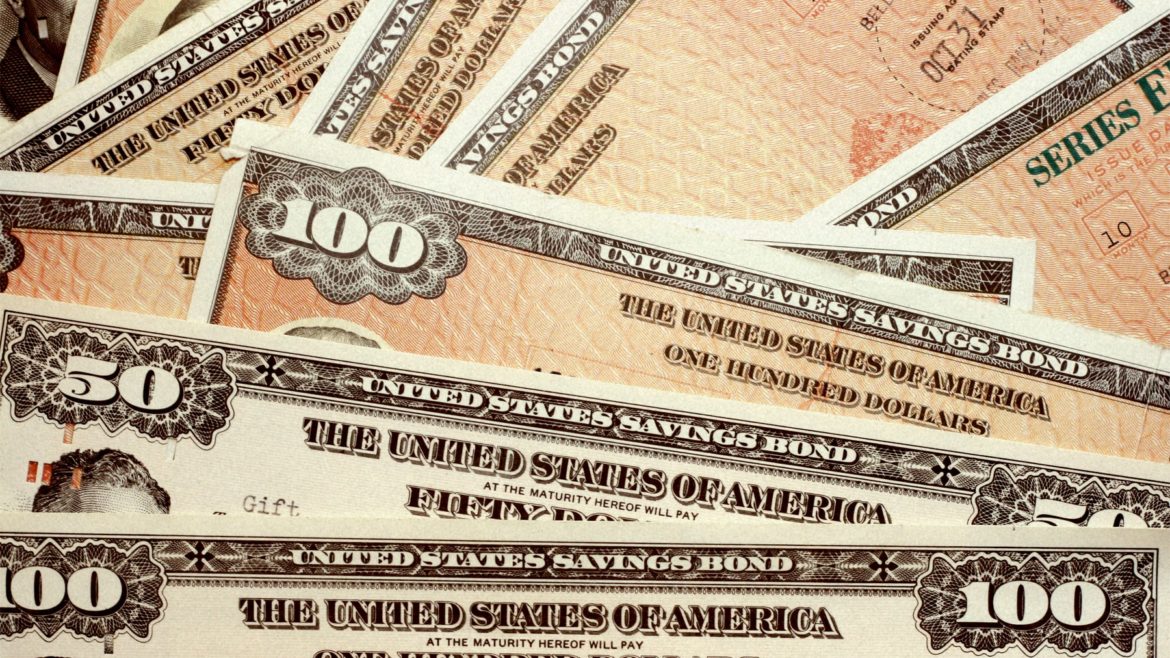The savings bond…something we don’t talk about very often these days. Why is that? Growing up, each year my grandparents would give me a savings bond inside my birthday card as part of my gift. Back then, I didn’t fully understand the value of what a savings bond even was, I just remember my mother taking and storing them inside her safety deposit box at our credit union, never to be seen again until I turned 18.
Savings bonds were a great gift to give (although dubiously received by children who love instant gratification) due to the fact that you didn’t have to do really anything except hold on to them until their maturity date. Many purchased savings bonds not only as birthday gifts, but for graduations, weddings, and even as part of retirement planning. So why don’t you hear of people doing this anymore? Have they completely disappeared? No, not exactly. You can still purchase a savings bond today. However, you cannot purchase them from your local financial institution. Why is that?
Change of purchasing system
Up until January 1st, 2012, you could purchase a savings bond from your local bank or credit union. This option ended, however, as the United States Treasury now only allows for them to be purchased online through their site: treasurydirect.gov. These savings bonds are not like the ones we are used to, these bonds are all electronic. According to the United States Securities and Exchange Commission, you can still purchase the series EE savings bond and the Series I savings bond.
With these going electronic, you can now purchase savings bonds in penny increments (starting from $25 up to $10,000 a year) whereas paper savings bonds had to be purchased in specific denominations. The reason behind the switch was all done to help the Treasury’s goal to increase the number of electronic transactions with both US citizens as well as businesses, which they believed would save the US taxpayer around $70 million over the first five years, according to an article published on TreasuryDirect’s website.
So how do the electronic bonds work? When purchasing a savings bond through TreasuryDirect, bonds will be held online through a secure account. TreasuryDirect also provides you with a demo so you can get a feel of how the process will work before creating an account. You do have the option to convert your paper bonds that you have on hand into an electronic format through the site if you choose.
What if you don’t want to convert your current paper bonds to electronic? You are in luck! You do still have the option of redeeming them at financial institutions, so no worries there. Through TreasuryDirect’s website you can also see exactly how much they are worth today if you choose to redeem them now.
Plummeting sales and alternative options
But let’s be completely honest, savings bonds just are not as popular as they once were. An article published in 2014 for CNN Business notes that there has been a steady decline in sales over the last few decades. In the year 2000, over 40 million Americans purchased the most popular savings bonds, whereas there were only about 400,000 sold in 2013, a decrease of 99%. Some believe that this is all in due part to the transition to electronic bonds, which has killed the popularity, and the idea that savings bonds just are not worth the time and hassle.
Furthermore, in a time when people are used to convenience and getting things instantaneously (see: Remote Deposit Capture, P2P payment apps, and Direct Deposit), waiting years to see a small return on a savings bond holds little appeal. Why keep something on a website for years that when the time finally comes time to redeem, chances are, you won’t remember your username and password, causing more obstacles and hoops to jump through?
Others speculate the decline may have been caused by financial institutions offering better alternative options, like certificates with a better interest payout. With these certificates, the interest is paid out sometimes every six months to a year, depending on the CD, which the member can cash out early if they choose to. This option generates income for the financial institution, due to early cash-out penalty the member must pay, and it gives the member more flexibility with their funds. However, savings bond interest is not calculated the same way, which means you are just better off holding onto the bond until it fully matures. All this hassle is just not worth it.
An increase in complexity equals a decrease in popularity
Furthermore, a big incentive for the savings bond was the ability to gift it. This system however has become much more complex with electronic bonds. To give as a gift, the recipient will not only be required to create an account, but you must know their full name, social security number, and their TreasuryDirect account number. Now, let’s say you want to give this as a gift to a minor. Well, you would still have the ability of giving a minor a savings bond, but a parent or guardian must create a minor linked account.
Keep in mind however, there are two points to consider when giving a savings bond as a gift: you will want to keep the bond in your own account until everything is set for the transfer. You must also keep the bond in your account for a minimum of five business days after purchase. This helps protect TreasuryDirect to ensure the ACH debit has been completed successfully before any funds can be moved. The recipient will receive an email once the bond has been delivered to their TreasuryDirect account. That’s a lot more intricate than it used to be, most likely dissuading people from purchasing.
Are savings bonds doomed to be a thing of the past?
As of today, a series EE savings bond that was issued from November 2019 through April 2020 will earn an annual fixed rate of .10%, whereas the Series I savings bond will earn a composite rate of 2.22%, a portion that is indexed to inflation every six months, as stated by TreasuryDirect. Knowing all this, many have just steered away from savings bonds altogether, and I honestly cannot blame them. At this rate, the word “savings bond” may just be a thing of the past and a faded memory that we will all have of the ‘good ol’ days’.























































